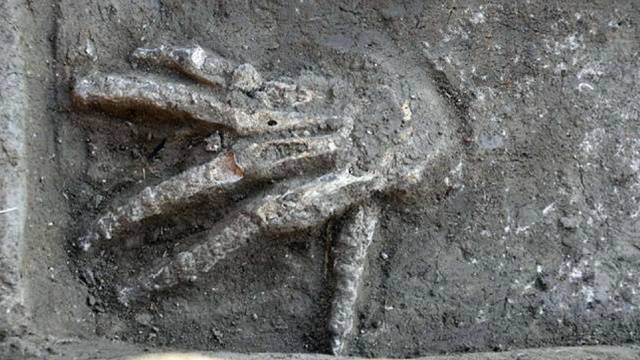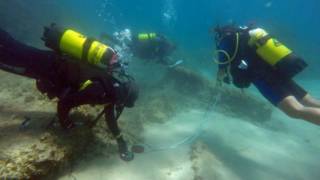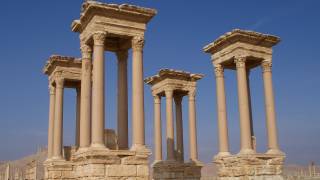An archaeological first: sixteen severed hands found buried in ancient Egyptian city
Source: io9.com
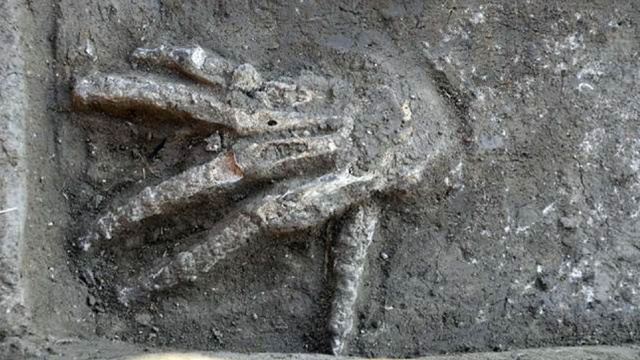
It’s a grisly find, but an unprecedented one, as well. Archaeologists in Egypt have unearthed 16 severed hands, buried in four pits throughout the ancient city of Avaris. Interestingly, if you’re looking for left hands, you’re out of luck; every one of the newly discovered meathooks is a righty.
Two of the pits are situated at the front of an ancient throne room thought to have belonged to a Hyksos ruler named Seuserenre Khyan, and contain a hand apiece. "Each pit represents a ceremony," explains archaeologist and Egyptologist Manfred Bietak, who led the excavation. Bietak’s team believes the remaining fourteen hands were buried some time later, in two pits located in the palace’s outer grounds.
According to Bietak, the 3600-year-old hands are the first physical evidence of a practice referenced in Egyptian writing and art, wherein the right hand of a bested enemy would be severed from the rest of the body. Reasons for dismemberment were manifold. For one thing, it made counting victims easier, and severed hands could also be exchanged for gold. But it also robbed an enemy of his strength; in cutting off an opponent’s hand, "you deprive him of his power eternally," Bietak explains.
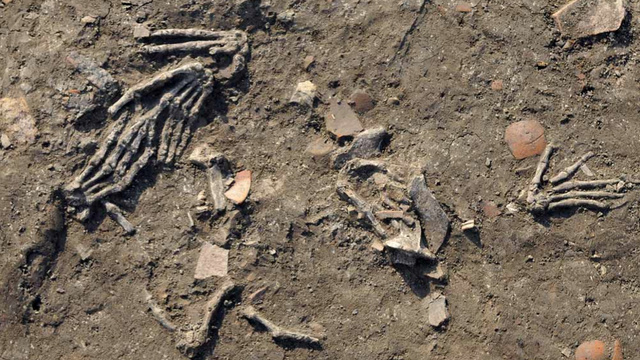
[...]
Read the full article at: io9.com
Severed Hands Discovered in Ancient Egypt Palace
By Owen Jarus | LiveScience.com
They are all right hands; there are no lefts.
"Most of the hands are quite large and some of them are very large," Manfred Bietak, project and field director of the excavations, told LiveScience.
The finds, made in the Nile Delta northeast of Cairo, date back about 3,600 years to a time when the Hyksos, a people believed to be originally from northern Canaan, controlled part of Egypt and made their capital at Avaris a location known today as Tell el-Daba. At the time the hands were buried, the palace was being used by one of the Hyksos rulers, King Khayan. [See Photos of the Buried Hands]
The right hand
The hands appear to be the first physical evidence of a practice attested to in ancient Egyptian writing and art, in which a soldier would present the cut-off right hand of an enemy in exchange for gold, Bietak explains in the most recent edition of the periodical Egyptian Archaeology.
"Our evidence is the earliest evidence and the only physical evidence at all," Bietak said. "Each pit represents a ceremony."
Cutting off the right hand, specifically, not only would have made counting victims easier, it would have served the symbolic purpose of taking away an enemy’s strength. "You deprive him of his power eternally," Bietak explained.
It’s not known whose hands they were; they could have been Egyptians or people the Hyksos were fighting in the Levant.
[...]
Scientists are not certain who started this gruesome tradition. No records of the practice have been found in the Hyksos’ likely homeland of northern Canaan, Bietak said, so could have been an Egyptian tradition they picked up, or vice versa, or it could have originated from somewhere else.
Read the full article at: livescience.com
